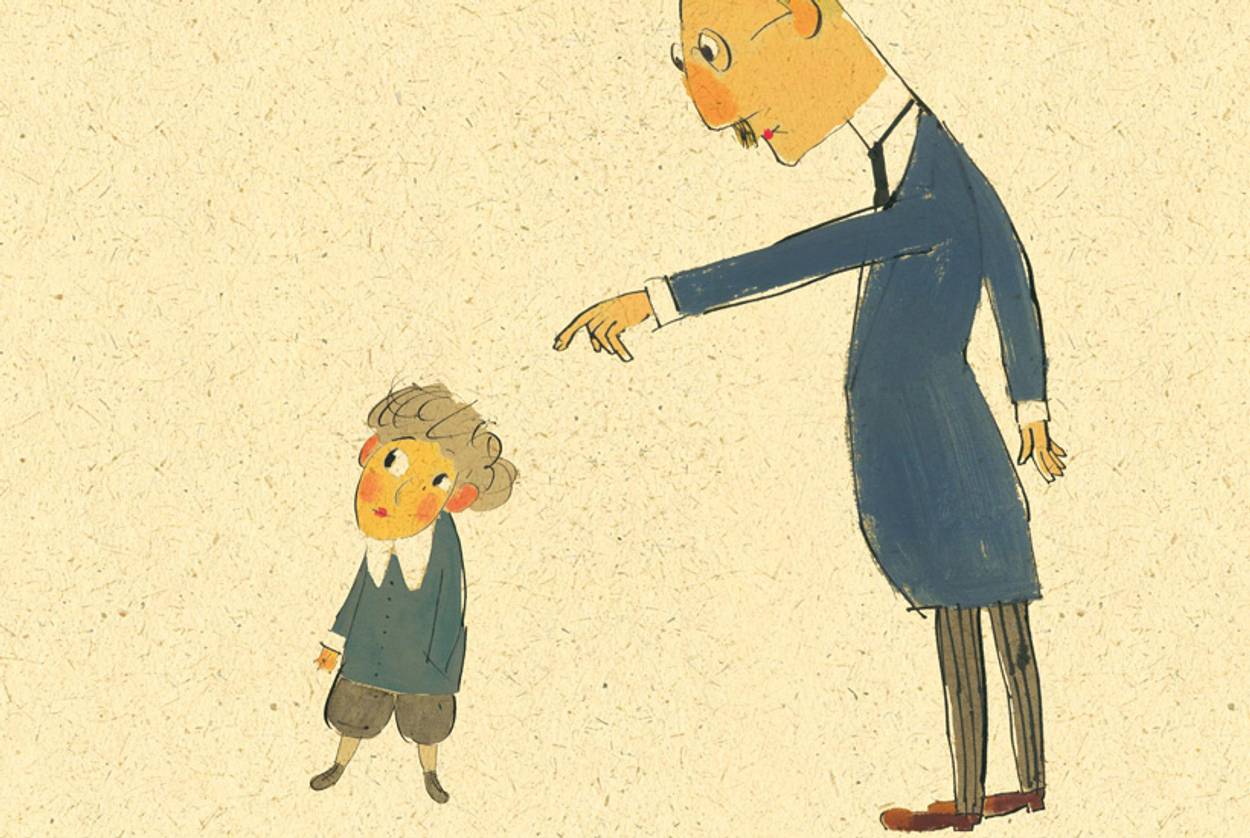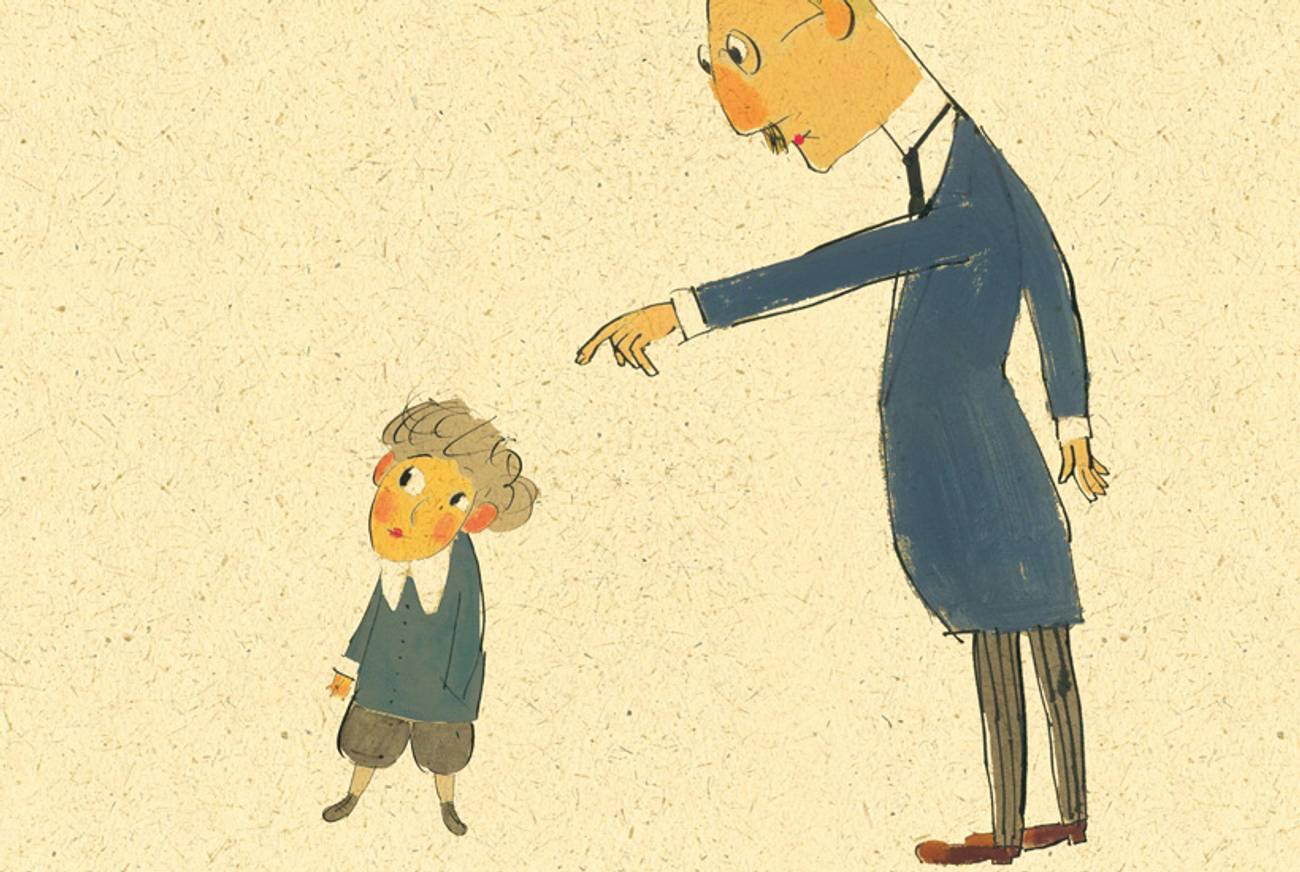Not Just for Kids: Three Knockout Biographies Bring Three Awesome Jews to Life
New books about Albert Einstein, labor organizer Clara Lemlich, and mathematician Paul Erdős will inspire readers of all ages




When I recommend children’s books, I try to make it clear that not every book is for right every reader. But these three Jewish biographies? They are right for every human on the planet. They are so unabashedly fabulous, such a perfect blend of writing and art, so good at explaining complicated subjects, so inspiring without being sappy, you need to stop what you’re doing and buy them all right now. (Fine, you can finish reading this review first.)
The Boy Who Loved Math: The Improbable Life of Paul Erdős, by Deborah Heiligman, illustrated by LeUyen Pham, is the story of one of the world’s greatest mathematicians. When Erdős was 4, he could ask your birthdate and then calculate to the second how long you’d been alive, but he couldn’t sit still in school. (Pham’s illustration shows young Paul racing around the classroom, flapping his arms, wide-eyed and beaming as the teacher reaches for him with her teeth gritted.) So, his mother, a math teacher, and his nanny, Fraulein, home-schooled him. Erdős soon fell in love with prime numbers. By the time he was 20, he was so famous for his work in math he was known as The Magician From Budapest.
But he still did not know how to …
do his laundry
or cook his food
or butter his bread.
At 21, Heiligman writes, Erdős went to dinner with a bunch of other mathematicians … and without Fraulein or Mama.
Everyone else talked and ate,
but Paul stared at his bread.
He stared at his butter.
He didn’t know how to
butter his bread.
Finally he took his knife, put some butter on it, and spread it on his bread. Phew. He did it! “It wasn’t so hard,” he said.
Erdős began traveling all over the world, doing math and connecting mathematicians. He liked helping his fellow thinkers with their work and playing with their kids (he called children “epsilons,” a math word for a very small amount), but he was a terrible houseguest. He needed help to do the most basic things (like laundry and grapefruit-cutting), and sometimes he’d wake his host up at 4 a.m. with the announcement: “My brain is open!”
Heiligman’s biography, which is aimed at kids aged 3 to 8, takes pains to dispute the title of a biography of Erdős for grownups called The Man Who Loved Only Numbers. “Numbers and people were his best friends,” she writes. She discusses Paul’s financial generosity and his desire to make connections: “All over the world mathematicians still talk about and love Uncle Paul,” she writes. “Even people who never met him. They talk about their ‘Erdős number.’ If you did math with Paul you get an Erdős number of 1. If you worked with someone who worked with Paul, your Erdős number is 2. People are so proud of their Erdős numbers.” (Six degrees of Kevin Bacon, for nerds! My statistician husband’s Erdős number is 4, by the way.)
The text and the art in The Boy Who Loved Math are both studded with numerals and mathematical symbols. Pham’s adorable, clean-lined, cuddly-looking illustrations are chock-full of math—math that gets harder as the book goes on. (First we see Paul counting, then he’s counting by twos and fives, then there’s a math problem using negative numbers, and pretty soon we’re looking at Erdős’ solution of Chebychev’s theorem and the Sieve of Eratosthenes.) That’s why this little-kid book will be appreciated by math fans of all ages. Pham explains all these references in the back of the book, but even numerically clueless readers will enjoy the pictures of Prague, of Fraulein’s impressive bustle, and of Erdős doing math on a camel’s hump. There are even math in-jokes here! And I love the final picture of an elderly Erdős in the big wide world, surrounded by prime numbers and doting fans (some of whom are little kids with epsilon symbols on their jerseys). For parents of kids with autism, or kids who are just obsessive or quirky, the book is deeply reassuring. “Paul was an unusual person who didn’t fit into the world in a ‘regular’ way,” Heiligman writes in her afterword. “Yet he figured out how to have a wonderful and meaningful life with an amazing career and legions of adoring friends.” In small print in the back, Heiligman mentions the sadder aspects of Erdős’ life: his sisters’ deaths from scarlet fever while his mother was in the hospital giving birth to him, his father’s stint in a Siberian prison camp, the fact that he fled the Nazis in 1938 and lost most of his family in the Holocaust—the only place Erdős’ Jewishness is discussed. The rest of the book is upbeat, but I like the fact that Heiligman gives readers the option of talking about the darker stuff.
On a Beam of Light: A Story of Albert Einstein, by Jennifer Berne, illustrated by Vladimir Radunsky, is visually very different from Heiligman and Pham’s book. Pham’s style is sweet, bright, and cartoon-y; Radunsky’s is more spare and sophisticated. The book is printed on textured-looking paper, and the art has a Maira-Kalman-y vibe, combining swoopy plain black ink drawings with some black ink and gouache pictures. (The end papers show us “Einstein’s favorite saggy-baggy sweater,” “Einstein’s favorite saggy-baggy pants,” “Einstein’s favorite blue cup,” and “Einstein’s favorite formula”—E=mc2, of course.) The writing is more consciously lyrical and adult-ish, too, but kids will get the beauty. It opens:
Over 100 years ago, as the stars swirled in the sky, as the Earth circled the sun, as the March winds blew through a little town by a river, a baby boy was born. His parents named him Albert.
Albert turned one year old. And didn’t say a word.
Albert turned two. And didn’t say a word.
Albert turned three. And hardly said a word at all.
He just looked around with his big, curious eyes.
Looked and wondered. Looked and wondered.
His parents worried. Little Albert was so different; was there something wrong? But he was their baby, so they loved him … no matter what.
A thought bubble above Albert’s father’s head reads “so different”; the one above his mother’s reads “but so dear.”
In simple ways, the book addresses Einstein’s growing interest in heat, light, magnetism, atoms, and motion. “One day, as Albert was zipping through the countryside on his bicycle, he looked up at the beams of sunlight speeding from the sun to the Earth. He wondered what would it be like to ride one of those beams? And in his mind, right then and there, Albert was no longer on his bicycle, no longer on the country road … he was racing though space on a beam of light. It was the biggest, most exciting thought Albert had ever had. And it filled his mind with questions.” There’s humor, too: When Einstein becomes an adult, he’s determined to go sockless (he’s shown pointing to his feet and exclaiming in a scribble that bursts from the bounds of its word bubble, “My feet are happier without socks!”). The book doesn’t address Einstein’s Jewishness or the anti-Semitism he experienced, or the less pleasant aspects of his character (Kathleen Krull’s fabulous book for older kids, Albert Einstein, one of Tablet’s best books for kids of 2009, does), but since it’s for very young readers ages 5 to 9—and adults who appreciate spiffy illustration (did I say “Kalman-y” earlier? Steig-esque would work, too)—that’s just fine.
Finally, we have Brave Girl: Clara and the Shirtwaist Makers’ Strike of 1909, a biography aimed at readers 4 to 8, written by Michelle Markel and illustrated by Melissa Sweet. I handed this to a fellow mom-of-daughters the other night, a friend who is an immigrant herself, and she gave it back with tears running down her cheeks. Yeah, it’s that good. For parents who care about social justice and who want to raise strong, confident girls, it’s better than that good.
It opens:
A steamship pulls into the harbor, carrying hundreds of immigrants—and a surprise for New York City.
The surprise is dirt poor, just five feet tall, and hardly speaks a word of English.
Her name is Clara Lemlich.
This girl’s got grit, and she’s going to prove it.
Look out, New York!
We learn how Lemlich got a job in a factory to support her family, and how she became a leader in the burgeoning union movement.
When the seamstresses are overworked, she says, “Strike!”
When they’re underpaid, she says, “Strike!”
When they’re punished for speaking up, she cries, “Strike!”
And the girls do!
The bosses hire men to beat her and the other strikers.
The police arrest her seventeen times.
They break six of her ribs, but they can’t break her spirit.
It’s shatterproof.
Clara hides her bruises from her parents.
A few days later, she’s on the picket line again.
And the other girls think, If she can do it, we can do it too.
Sweet’s mixed-media illustrations incorporate swatches of fabric, snippets of checkbooks and timecards and ledgers, and line after line of machine-stitched thread, as well as watercolor and gouache. The afterword talks about the history of American Jewish immigration, the garment industry, the Triangle Factory Fire, and other Jewish women besides Lemlich who kept up the battle to make workplaces safer. The story concludes:
Her throat is hoarse, her feet are sore,
but she has helped thousands of people.
Proving that in America,
wrongs can be righted,
warriors can wear skirts and blouses,
and the bravest hearts
may beat in girls
only five feet tall.
Now I’m weepy too.
Buy all three of these magnificent books for yourself. If you’re very, very lucky, you’ll know an epsilon to share them with.
***
Like this article? Sign up for our Daily Digest to get Tablet Magazine’s new content in your inbox each morning.
Marjorie Ingall is a columnist for Tablet Magazine, and author of Mamaleh Knows Best: What Jewish Mothers Do to Raise Successful, Creative, Empathetic, Independent Children.
Marjorie Ingall is a former columnist for Tablet, the author of Mamaleh Knows Best, and a frequent contributor to the New York Times Book Review.